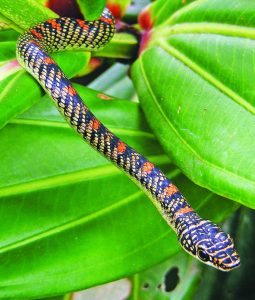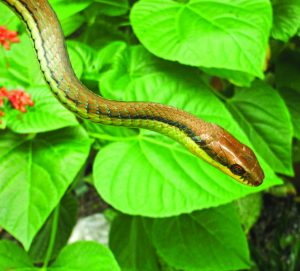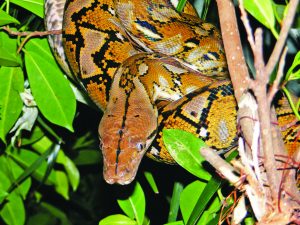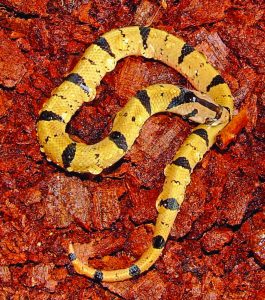Manila in History
In its historical sense, the city of Manila, encompassed only the boundaries of what is currently Intramuros, with the arrabales, or suburbs, surrounding it belonging to the kingdom of Tundun, which was variously referred to as Tunduk, or Tondo. Over time, these adjacent areas became absorbed under a greater Manila, although the degree of development was mostly centered on Intramuros and the business centers of nearby Escolta, Divisoria, and Binondoc, now Binondo.
The fringes of the city were still mostly covered in forests of variable intactness; one only needs to be reminded that during the critical moments prior to the outbreak of the 1896 revolution, Andres Bonifacio and his men gathered at Makangkong, within Balintawak, with the place being chosen due to the protective nature of its dense forests, apart from its higher elevation which provided tactical advantage over the lower terrains of Kalookan and into the entrance of the Manila city proper, located in present day Monumento.
Similarly, Tandang Sora’s property was located deep into the forest, and provided security for recuperating Katipuneros. Nevertheless, in contrast to the Germans and the British, the Spanish displayed very little interest in natural history, and due to the paucity of accounts concerning flora and fauna, one can only wonder what species have we since lost during the course of Manila’s development as a city. Still, La Real Sociedad Economica de Amigos del Pais, established on April 26, 1781, had as one of its agenda a study of the colony’s natural history, although, as was pointed out by Edward H. Taylor, the classification of Philippine snakes was but a “juvenile attempt”. Edward H. Taylor is of course, perhaps the most influential herpetologist to have ever worked on Philippine reptiles and amphibians.

In 1919, his The Snakes of the Philippine Islands was written and published three years later in Manila, and this work provides us a glimpse of the snake species found within the city until the early part of the 20th century. This paper is heavily drawn from this work by Taylor. For the purposes of this article we shall be operating within a conceptual definition of Manila, which means that every time it is mentioned, we are referring to Manila in its current sense, although it goes without saying that whatever occurred or still occurs within the city also existed or probably continues to exist on adjacent cities. Note too that the museum specimens from the Bureau of Science mentioned here no longer exists, after the heavy destruction of the building complex after the Second World War.
Manila’s Historical Snake Species

- ACROCHORDUS GRANULATUS – as (Chersydrus granulatus) from No. 773, Bureau of Science collection; collected in Manila Bay.
This species is still quite common in Malabon, where it is known as malabasahan, on account of its loose skin. It is quite unlikely that this species is still found in good numbers in the heavily polluted Manila Bay, if at all. Non-venomous.

- CALAMARIA GERVAISII – From Taylor: “The former subspecies is especially common in Luzon, even in the city of Manila. It is a gregarious, burrowing species.” And as footnote: “Kenneth, Carl, and Bettie Knust, three ardent young herpetologists, collected more than 300 specimens of C. gervaisii gervaisii about the yard of their home in Malate, Manila.”
Calamaria gervaisii remains common in the Manila area and neighboring cities, but only where there is sufficient expanses of vegetation, such as in parks. Due to their cryptic nature, this non-venomous species is far less likely to be discovered and thus killed by paranoid humans.

- CORYPHODON KORROS – fide de Casto de Elera*. A questionable record possibly referring to Ptyas luzonensis, a large and widespread snake that often inhabits waterways in search of frogs, their main diet. The city is intersected with several rivers and estuaries, and it may be that during those periods when such bodies of water were still sufficiently forested, P. luzonesis were probably common denizens.

Naja philippinensis, juvenile
Degradation of habitats and persecution may have been decisive factors in the extirpation of this species in the Manila area, which is otherwise fairly easily observed in adjacent provinces. Ptyas korros, despite its wide distribution, is currently not known to occur in the Philippines. Ptyas is a genus of non-venomous snakes.
- DRYOPHIOPS PHILIPPINA – From Taylor: “female record, no. 207; the species is arboreal and feeds on small lizards for the most part. The grooved fangs suggest the presence of poison glands. The poison is incapable of serious Injury to larger animals or man.”
A secretive, mildly venomous species and one that appears to be strongly tied to intact lowland habitats, Dryophiops philippina is said to be getting increasingly rare despite its wide distribution. Doubtless that this species is already likely extinct anywhere in the Manila area, with the possible exception of parks and cemeteries.
- FORDONIA LEUCOBALIA- Remarks by Taylor: “Known as the Crab-eating Mangrove Snake, this species is included on the strength of Oskar Boettger’s record of a specimen from Manila, collected by von Moellendorff.” During Taylor’s time, mangroves were still quite intact around Tondo and Intramuros.
Habitat conversion and pollution could have driven this species’ extinction in Manila. This species was not included in Angel C. Alcala’s Reptiles and Amphibians in Vol. 10 of Guide to Philippine Flora and Fauna. These snakes’ venom is highly specialized to subduing crustacean prey and pose no risk to man.
- GERARDIA PROVOSTIANA- from Taylor: “Gerardia has been frequently included in Philippine faunal lists on the authority of A.M.C. Dumeril and G. Bibron, who report Gerardia prevostiana Eydoux and Gervais from Manila. The specimen so reported very probably originated in Ceylon, or on the Indian coast.”
- LYCODON CAPUCINUS- as Ophites aulicus. Known in the Tagalog vernacular as ahas-tulog or ahas-bahay, this nocturnal, non-venomous species remains one of the most commonly encountered snakes around Manila, but are often killed out of fear.

Python reticulatus - LYCODON TESSELLATUS- Taylor’s Remarks say “The type locality is “Manila auf Luzon.” This is the only exact locality known. Miiller’s specimen is labeled “Philippinen.” Evidently this species is very rare.” Lycodon tessellatus is one of the more enigmatic species of snakes in the Philippines, and if the locus classicus is now already urbanized and unless further populations can be found, then this distinctive species is already possibly extinct.
- OLIGODON ANCORUS (as Holarchus ancorus) – From Taylor: “there exists a photograph of a living specimen from Manila; It is probably confined to the Philippines. The reference of specimens to Java is probably erroneous. The species is small, and absolutely harmless. It appears very gentle when handled… This species is not rare in Luzon.”

Oligodon ancorus
A species that is very rare, if not already extirpated, in Manila with the possible exceptions of parks and cemeteries. A primarily egg-eating snake with large fangs designed to puncture leathery reptile eggs. The fangs have no venom-conducting glands.
This appeared in Animal Scene magazine’s July 2018 issue.






